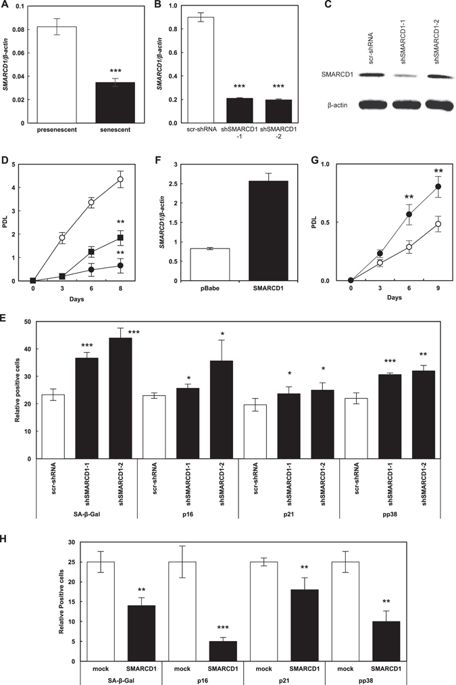npj Aging and Mechanisms of Disease Pub Date : 2017-08-30 , DOI: 10.1038/s41514-017-0011-1 Chisato Inoue , Chong Zhao , Yumi Tsuduki , Miyako Udono , Lixiang Wang , Masatoshi Nomura , Yoshinori Katakura

|
Previously, we have identified 16 senescence-associated genes by a subtractive proteomic analysis using presenescent and senescent human fibroblast cells, TIG-1. The aim of this study was to clarify the role of SMARCD1, one of the identified genes, also known as BAF60a, in hepatic senescence. SMARCD1 is a member of the SWI/SNF chromatin remodeling complex family, and regulates the transcription of target genes through the alterations of chromatin structure. We demonstrated that the reduced expression of SMARCD1 triggers cellular senescence and induces the accumulation of lipids, suggesting that SMARCD1 acts as a mediator in these processes. Furthermore, palmitic acid treatment and high-fat diet led to a significant reduction of SMARCD1 expression, and consequently induced cellular senescence and lipid accumulation in HepG2 cells and mouse liver, respectively. The results obtained here suggest that dietary nutrient-associated impaired expression of SMARCD1 triggers cellular senescence and lipid accumulation, indicating a potential application of SMARCD1 in the prevention of lifestyle-related diseases.
中文翻译:

SMARCD1调节肝细胞中与衰老相关的脂质蓄积
以前,我们已经通过使用衰老和衰老的人类成纤维细胞TIG-1进行的蛋白质组减色分析确定了16个与衰老相关的基因。本研究的目的是阐明SMARCD1(一种已鉴定的基因,也称为BAF60a)在肝衰老中的作用。SMARCD1是SWI / SNF染色质重塑复合体家族的成员,并通过染色质结构的改变来调节靶基因的转录。我们证明SMARCD1的减少的表达会触发细胞衰老并诱导脂质的积累,这表明SMARCD1在这些过程中起着介体的作用。此外,棕榈酸治疗和高脂饮食导致SMARCD1表达显着降低,并因此诱导了HepG2细胞和小鼠肝脏中的细胞衰老和脂质蓄积,分别。此处获得的结果表明,饮食中与营养有关的SMARCD1表达受损会触发细胞衰老和脂质蓄积,表明SMARCD1在预防与生活方式有关的疾病中具有潜在的应用价值。


























 京公网安备 11010802027423号
京公网安备 11010802027423号